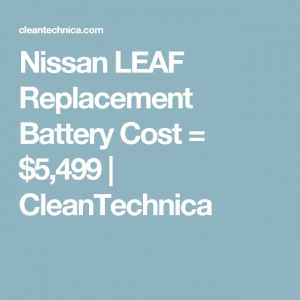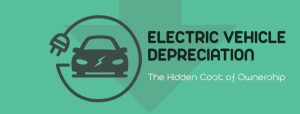Guest Post by Eric Peters

A number of problems stand athwart the Electrification Agenda, which is supposed to be accomplished fact less than nine years from now – come 2030. Perhaps the single biggest problem is the fact that even if every car maker makes nothing but electric cars by then – or sooner, as several have “committed to” already – there will still be a lot of non-electric cars for a long time to come.
Well beyond 2030.
This is so because non-electric cars have a much longer useful service life – functionally and economically – than electric cars. Almost any car bought today, in 2021, will not only still be in service come 2030 it will still have many years of functional and economically viable service life left.
A nine-year-old car is a middle-aged car. It is routine for cars with 100,000 miles to go another 100,000 miles, often without a major repair being needed. This is why the average age of a car currently in service as a daily driver is 12-plus and also why it is common to see cars much older than that still in service. Especially exceptionally durable models such as the Toyota Corolla and Camry, the Honda Accord and a number of others that routinely keep on keeping on for more than 20 years and 250,000-plus miles.
There are not many ten-year-old electric cars still in service – and won’t be – because of the inherently shorter functional and economically viable lifespan of electric cars, especially when they are used as daily driver cars (which most aren’t; see here for more about that).
The reason for both of those problems is the battery problem, which is a problem that hasn’t been overcome and will not be overcome until there is a new type of battery – one that somehow defies the known physics of batteries.
Specifically, the functional problem that all batteries – from the tiny one in your smartphone to the huge one in an electric car – lose their capacity to hold a charge over time as a result of being discharged and then recharged. This is not an economic problem when the battery is small – or rather, when its replacement cost is small relative to the device it is powering. It makes economic sense to spend say $5 to put a new dime-sized lithium-ion battery in a remote control for a ceiling fan rather than chuck the control and spend $12 for a new remote.
But it does not make sense to spend $4,000 – on the low end – to replace an aging electric car’s enormous battery pack due to the fact that by the time it becomes necessary to replace the electric car’s battery pack, the value of the electric car itself has depreciated to such a degree that it does not make economic sense to spend the money on the battery pack.
Electric cars are exactly the same as any other car in that they lose value over time – i.e., they depreciate. But depreciation is a much bigger economic problem for electric cars, because of the inevitable and sooner-occurring need to replace the thing that makes the EV go, i.e., its batteries.
Without which it doesn’t go.
And when it doesn’t go anymore, the EV is worthless. It is also worth less – i.e., it depreciates more rapidly – than a non-electric car because it’s known that a nine-year-old electric car with 100,000 miles on the odometer hasn’t got another nine years and 100,000 miles of life left in it. The nine-year-old electric car’s range is probably already less at this point than it was when it was new – a clear warning indicator of a battery in decline.
Which accounts for the much more precipitous decline in the value of a used EV relative to the value of a used non-EV. 
Most nine-year-old non-electric cars will travel just as far as they did when they were brand-new – and will still be traveling just as far nine years later. So while they depreciate, they don’t depreciate as hard – and as fast – as electric cars, which can and routinely do lose half their value within as little as five years of leaving the dealer’s lot. This being a function of having to spend half what they are worth to keep them going – which even then won’t be as long as a non-electric car goes without having to do anything, usually.
Which brings us back to the problem with the Electrification Agenda:
What to do about all those non-electric cars still in circulation come 2030 – and beyond? It is certain that, absent a powerful nudge, millions of people will “cling” to their non-electric cars far beyond 2030.
Especially cars made years – decades – before 2021.
Cars built before LCD touchscreens and electronic controlling of all the car’s mechanical systems can – and do – last for decades and unlike electric cars and cars with elaborate electronic controls – can be made to last for decades more. Practically any car made before the early ’80s, for instance is essentially a mechanical thing and its mechanical things are mostly rebuildable rather than replaceable.
Look at Cuba for a demonstration of this fact.
It will be necessary to address the problem of such cars – as well as the problem of modern cars with electronic controls and touchscreens, which are still fundamentally mechanical things and for that reason many of them will still be quite serviceable in 2040 and probably well beyond that.
So how will this problem for the Electrification Agenda be addressed?
It is already being addressed – via the artificially induced expedient of making it more (and more) expensive to fuel non-electric cars. See here. Or see – the next time you fuel up.
Gasoline – unlike electric car batteries – does not have to be expensive but it can be made expensive by politicians and by making it expensive, these politicians achieve the same effect – or rather, a parity effect – as the passing of a law force-retiring non-electric cars.
By making non-electric cars as expensive to operate as electric cars are to keep operational.
Other forms of the nudge to come will likely include usurious registration fees for “polluting” non-electric cars and if that’s insufficient to release the grip of the “clingers” then there will probably be the vehicular iteration of the current “masks required” signage on roads, taking the form of “electric cars only.” There is already precedent for this in the form of electric car/hybrid-electric car privileges for HOV – High Occupancy Vehicle – travel lanes in many cities around the country.
The bottom line is something will have to be done about the problem of non-electric cars lasting far too long – and costing far to little – relative to the electric cars they intend to force down everyone’s throats.
Unless, of course, we do something about the problem of them.
It is my sincere desire to provide readers of this site with the best unbiased information available, and a forum where it can be discussed openly, as our Founders intended. But it is not easy nor inexpensive to do so, especially when those who wish to prevent us from making the truth known, attack us without mercy on all fronts on a daily basis. So each time you visit the site, I would ask that you consider the value that you receive and have received from The Burning Platform and the community of which you are a vital part. I can't do it all alone, and I need your help and support to keep it alive. Please consider contributing an amount commensurate to the value that you receive from this site and community, or even by becoming a sustaining supporter through periodic contributions. [Burning Platform LLC - PO Box 1520 Kulpsville, PA 19443] or Paypal
-----------------------------------------------------
To donate via Stripe, click here.
-----------------------------------------------------
Use promo code ILMF2, and save up to 66% on all MyPillow purchases. (The Burning Platform benefits when you use this promo code.)






I plan on keeping my old inefficient 87 Dodge truck with big tires just because of the condition of the roads now(and because I love it). I can only believe the roads will only get worse in the future. P.S. I just don’t see myself going to the dump or to get firewood in a Prius.
Perhaps other events will make all this irrelevant or silly over the coming years . One ‘good’ EMP could make for a lot of attitude change.
Completely agree with Eric’s assessment.
The only thing is that “they” and “them” needs to be changed to “They” and “Them” – those stupid evil tools of the B3rg*.
(That pothole in the lead photo looks more like a tank trap at one and one half lanes across.)
How are they going to get the millions and millions of apartment, condo dwellers and even homeowners with no garage to switch to electric cars when charging is impossible? There will only ever be more and more of these people also since space and land costs make it so that small units stacked deep are the only options being built.
Easy; everyone, with the exception of the B3rg* and their tools, will be getting a rickshaw. As a bonus, adoption of that venerable transport modality for the Lumpen will also help with the rapid reduction of the obesity pandemic*.
*A real pandemic in the USSA at about 33%:
https://www.cdc.gov/obesity/data/prevalence-maps.html#overall
WARNING – View all CDC data, information, and guidance with highest levels of critical skepticism.
I have to admit the new F150 hybrid is intriguing. I love my diesel F350. If they ever make a hybrid Super Duty, I may consider it.
Yeah, those are sweet.
Big $$ though.
We rented a Ford Fusion hybrid-gas/electric-a couple of years ago and it was freaking awesome. Ran like a scalded rabbit (apologies to Fatal Attraction fans) and only used a 1/4 tank of gas in 5 days.
I don’t understand why they aren’t working on a DIESEL/electric. Best of both worlds and would be a rocket with turbo diesel twist.
I sold my 90 Ranger a few years back after driving it daily for 26 years. Garage kept and routine maintenance. Drive line was still tight and only major expense was 1k having front end gone through with u-joints and tie rod ends/ball joints replaced.
Miss the old girl, mostly stirring the gears. Hate automatics.
The Ford Ranger has got to be right up there with the best all round vehicles concerning how long they last. My father had one up until 300K. Sold it for $2,000.
Newer ones have heated tailgates. nice feature.
They are going to have driverless electric cars that you summon with an app and it drops you off and leaves. Waymo is a good example. Invest in it or something similar. It’s Bidens green plans that will make this stuff happen. My pickup with a 460 would be expensive to replace with an electric vehicle that can match it though.
Literally, $trillions needed in infrastructure to convert gas stations to electric.
With everybody charging their vehicles at night there won’t be anyone eating toast for breakfast. All available power would be sucked dry by 4am.
These brainiaks really don’t bother to think things through do they?
Peters, your last sentence is what is the most economical solution.
Here are some numbers from my personal history of cars:
2001 Ford F-250 – 297,000 miles – still in service
2007 Toyota FJ Cruiser – 367,000 miles – still my daily driver
1989 Honda Accord – 423,000 miles – my sons commute beater still going
2001 Prius – 129,000 and traded in due to bad battery pack…
2004 Prius – 148,000 and traded in due to bad battery pack…
The electric revolution is dead in it’s tracks, because the batteries needed to convert the truck fleet would be 2X the number of trucks – because you have to reduce the maximum load by 50% due to the battery pack needed for a truck.
Can you imagine a tractor running on batteries? What do you do – have a trailer behind it to carry the batteries?
This mental masturbation that is all electric is just bullshit – reminds me a the flying car people have been screaming about since the 1950’s. We are more likely to go back to rail, trolleys and even horses than this ‘electic car only’ cowpie in the sky.
Let’s look at economics of motor fuel distribution at the retail level; I was GM of a mid-sized oil jobber in the 80s (1oMM gals. back then) and have been an environmental consultant to the same for the past 32 years. In 1990 an average retail outlet/C-store could be bulit for $300-350K in a city of 100-150K. Today, a super pumper (think Sheetz, QuikTrip, Circle K, etc.) will set you back anywhere from $4-6MM.
So you’re a jobber or a senior commercial loan officer at Wells. Why would you build or loan if that market won’t exist in 9-10 years? I call BS as well on electrocar domination.
Does the word STUPID ever come up these days. You can’t build the following with out massive inputs of fossil fuel energy, wind turbines, solar panels, hydro dams, nuke plants, and electric cars.
Probably the simplest most reliable and easiest to work on vehicle ever made is the Ford Model-A
It was the first car I ever drove and that was in 1953, I was 9 at the time, Yeah I’m an old guy.